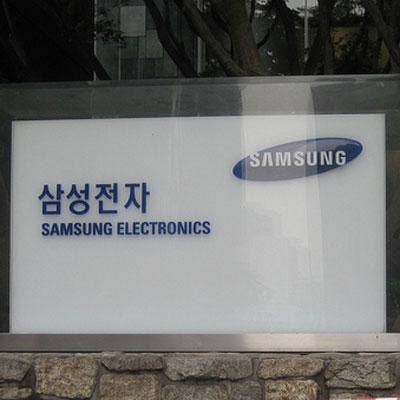5 Problems That Are Crushing Samsung's Mobile Division

A Tough Quarter For Mobile
South Korea-based smartphone company Samsung had a rough fourth quarter, posting a 64 percent mobile profit decline in the quarter ended Dec. 31.
The company posted a mobile division operating profit of $1.8 billion in the fourth quarter, down 64 percent from $5 billion in the same quarter the previous year. The company also suffered a 27 percent drop in overall fourth-quarter earnings of $4.9 billion vs. last year's fourth quarter.
Meanwhile, a recent IDC study revealed that Apple's 74.5 million global smartphone shipments in the fourth quarter had almost surpassed longtime mobile leader Samsung's 75.1 million.
Analysts are pointing at various reasons for the company's declining mobility profit. Following are five reasons for Samsung's mobility decline over the past few quarters, and how Samsung executives are hoping to address these issues.

5. More Mid- And Low-End Smartphone Companies
Ryan Reith, mobile research director at IDC, explained that Samsung is crumbling under pressure from companies such as Xiaomi and Huawei that are releasing low-priced products.
"Now there are tons of Chinese vendors emerging with manufacturing devices that have the same look and appeal as other phones, but are cheaper, and are targeting the same markets as Samsung," Reith said.
But Kim Hyun-joon , senior vice president of Samsung's Mobile Communications Business, said the company has an advantage through its brand awareness and channel relationship.
"Our strategy in the mid- to low-end segment is to address both the product side of the competition as well as the price side of the competition," he said during the earnings call. "We are planning on incorporating some of the key features offered in the high-end segment of our products to the mid- to low-end products."

4. Turnaround In China's Market
Samsung competitor Apple made impressive strides in China after the release of the iPhone 6 and iPhone 6 Plus in the fourth quarter of 2014.
Analysts attributed the success of Apple's new smartphone products to increased consumer demand for a larger mobile screen. Reith noted that Samsung takes credit for starting the large-screen trend emerging in the industry, but the 5.5-inch display of the iPhone 6 hurt Samsung's presence in China.
"Personally, I think Samsung tripped up in China and has a slim chance of getting to the top again," said Reith. "Now, they need to make sure their footprint grows in other areas, like Indonesia, Brazil and India. Those are big markets and have huge opportunities for smartphone growth in the future."

3. Apple's Immense Popularity
Apple CEO Tim Cook talked up the strong iPhone sales during the company's recent earnings call, emphasizing that the current iPhone lineup experienced the highest Android switchover rate over the past three launches. Reith stressed that Apple's success is due in part to the popularity of the large screen of the iPhone 6 and iPhone 6 Plus, released in September.

2. Samsung Reached Its 'Tipping Point' For Brand Marketing
Reith said Samsung would have to make strides not just in its devices, but its branding and marketing techniques to affirm its place at the top of the smartphone market.
"Leading vendors have a three-year window where their marketing and branding portfolio are successful before they reach their tipping point," he said. "Samsung has reached its tipping point. … It has become too comfortable with its product."
When asked about Samsung's "stale" portfolio during the earnings call, Kim pointed to a future line of innovative products.
"The main message is that we are preparing a very innovative product in the large-screen segment, as well as a new high-end product that will use innovative materials as well as displays," he said.

1. No Silver Linings
The mobile profit decrease is not a temporary trend, as Samsung executives noted during the earnings call. But going forward, the company hopes to continue to streamline its product portfolio and focus on developing innovative features and mobile displays.
"For Samsung, we aim to increase our shipments by continuing to introduce new competitive models while maintaining healthy channel inventory levels," said Kim. "Regarding smartphones, we plan to launch a new Flash model in the large-screen category and a new premium model, along with new mid- to low-end models with more advanced features and more competitive price."